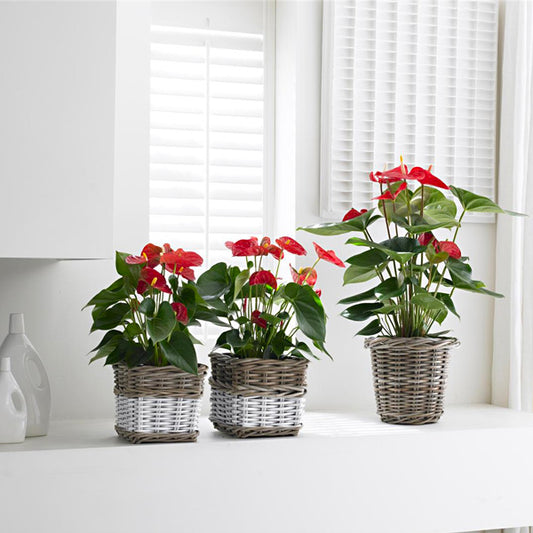Paphiopedilums are commonly known as Lady's Slipper Orchids because the lip is modified into a pouch-like structure resembling of a lady's shoe. They do not come in vivid fancy colours for which most other orchids are known but those who grow paphiopedilums cherish them for being distinct from all other orchid groups. Most paphiopedilums are terrestrial or lithophytic while a few are epiphytic. All members of the genus are found in tropical and subtropical Asia extending into the Pacific Islands.
Light
Most Paphiopedilums are low-light orchids since a majority of them are found as terrestrials on the forest floor; however, the epiphytic ones like Paphiopedilum villosum, members of Section Brachypetalum along with Paphiopedilum exul that are found growing on cliffs near the sea in Southern Thailand and the extremely rare Paphiopedilum druryi found growing on the montane grasslands of Southern India are tolerant of higher light intensities.
Water
All members of the genus are found growing in the monsoon-fed regions of Asia on either side of the Equator and due to this need to have their roots moist at all times; however, their roots will rot if left sitting in water. They are sympodial orchids that have no storage organs and are therefore not recommended for the beginner who will most definitely end up killing them. In the North-East of India where there is a distinctly cold and dry season, watering will need to be reduced when temperatures begin to dip.
Humidity
Paphiopedilums enjoy humidity with air movement. In places where humidity drops during the summer, paphiopedilums will sulk by drooping their leaves which lose their sheen. The added stress can bring in a spider mite infestation evidenced by a whitish or rust-colored mottling of the undersides of the broad long leaves. This can be set right by setting up a misting facility if you have a greenhouse or by sitting your plants on a pebble tray filled with water after making sure water does not enter the pot.
Temperature
Paphiopedilums grow best at temperatures ideal for humans; 15-19 degrees Celsius during the night and 24-29 degrees Celsius during the day. They can tolerate short deviations from this range. Those species found closer to the Equator at sea level can tolerate higher temperatures better while those found in the Himalayan foothills will tolerate cold better.
Potting and Fertilizer
Culture & media for your paphiopedilums will vary from region to region. Regions that have a less pronounced monsoon where the media can dry out partially before it rains again as well as regions that have a distinctly cold and dry season can benefit by adding finer media along with a liberal dose of leaf mold. Kiwi Orchid Bark is one of the best mediums to grow Paphiopedilums. These being sympodial will produce new growth at the start of the monsoon which will mature by the end of the monsoon and bloom. Adult plants can be fertilized using HighGrow fertilizer and once a month using HighBloom fertilizer.

